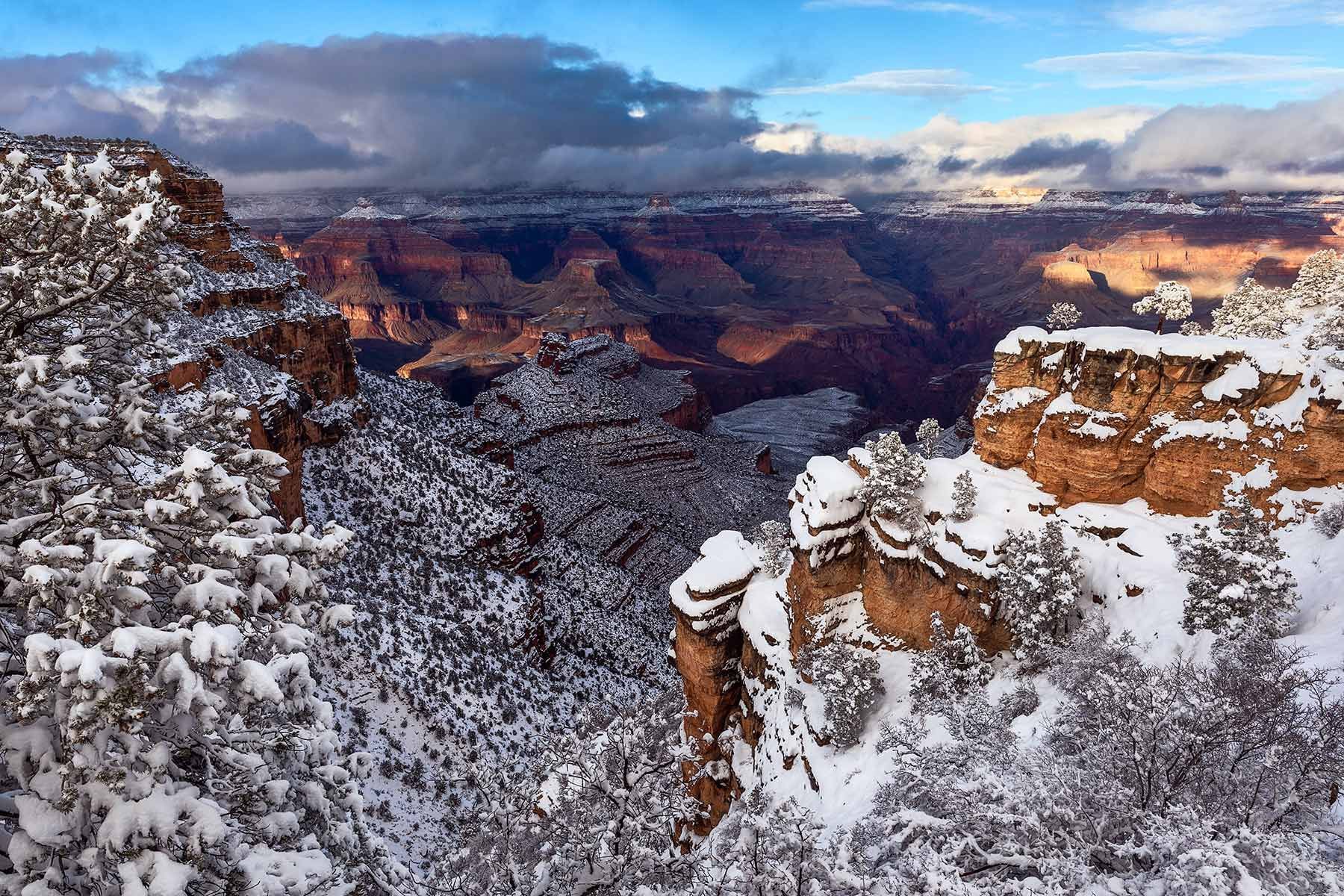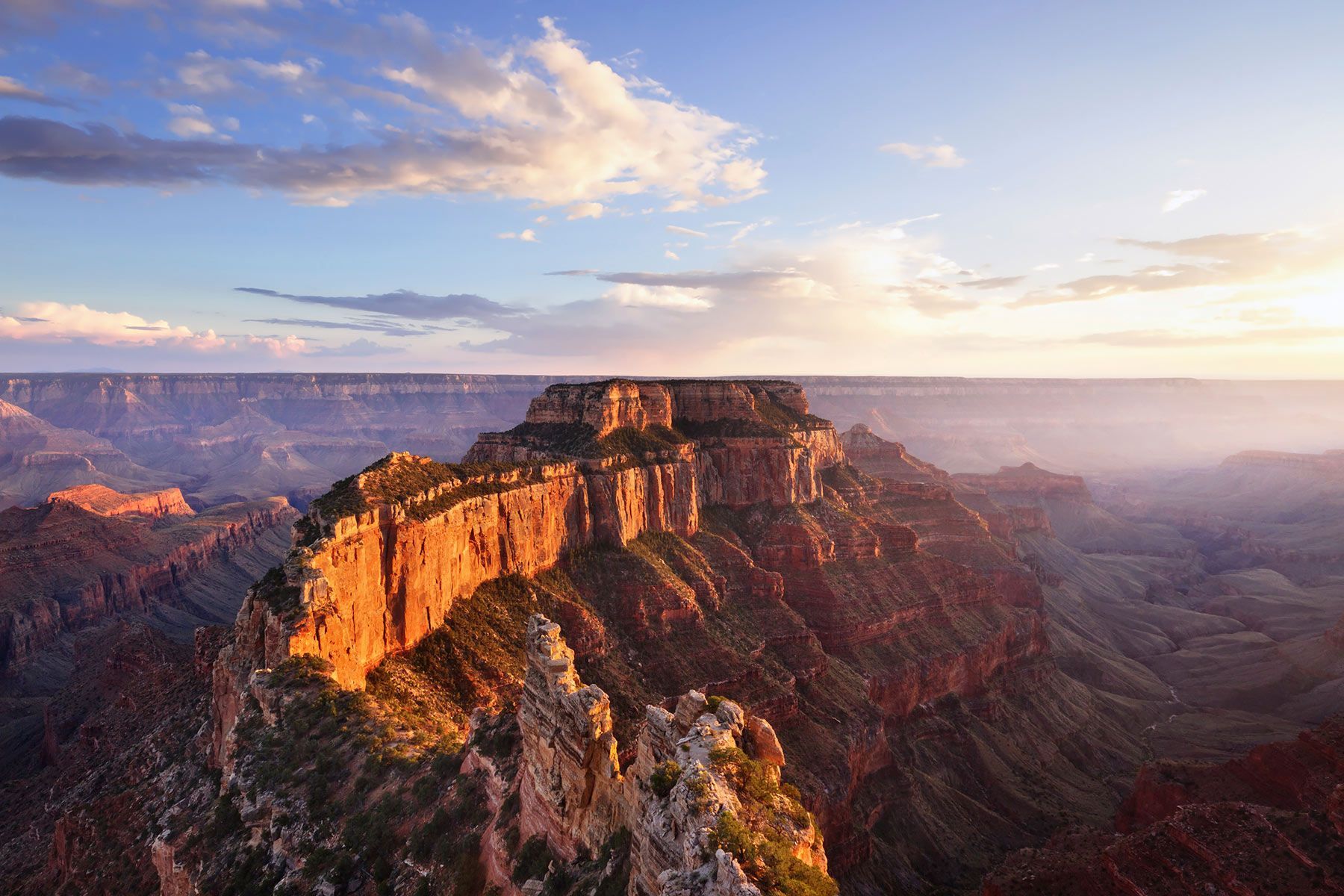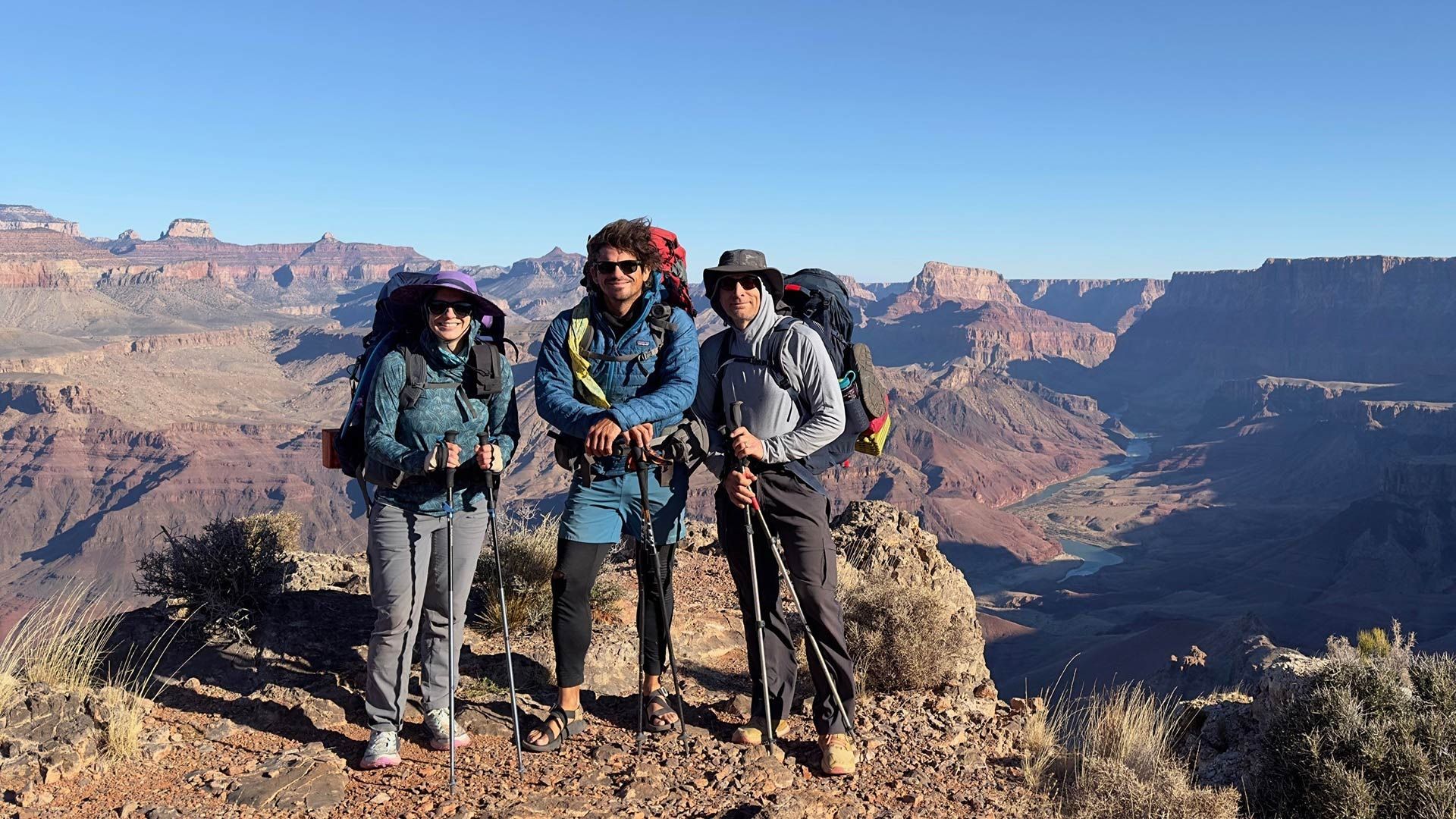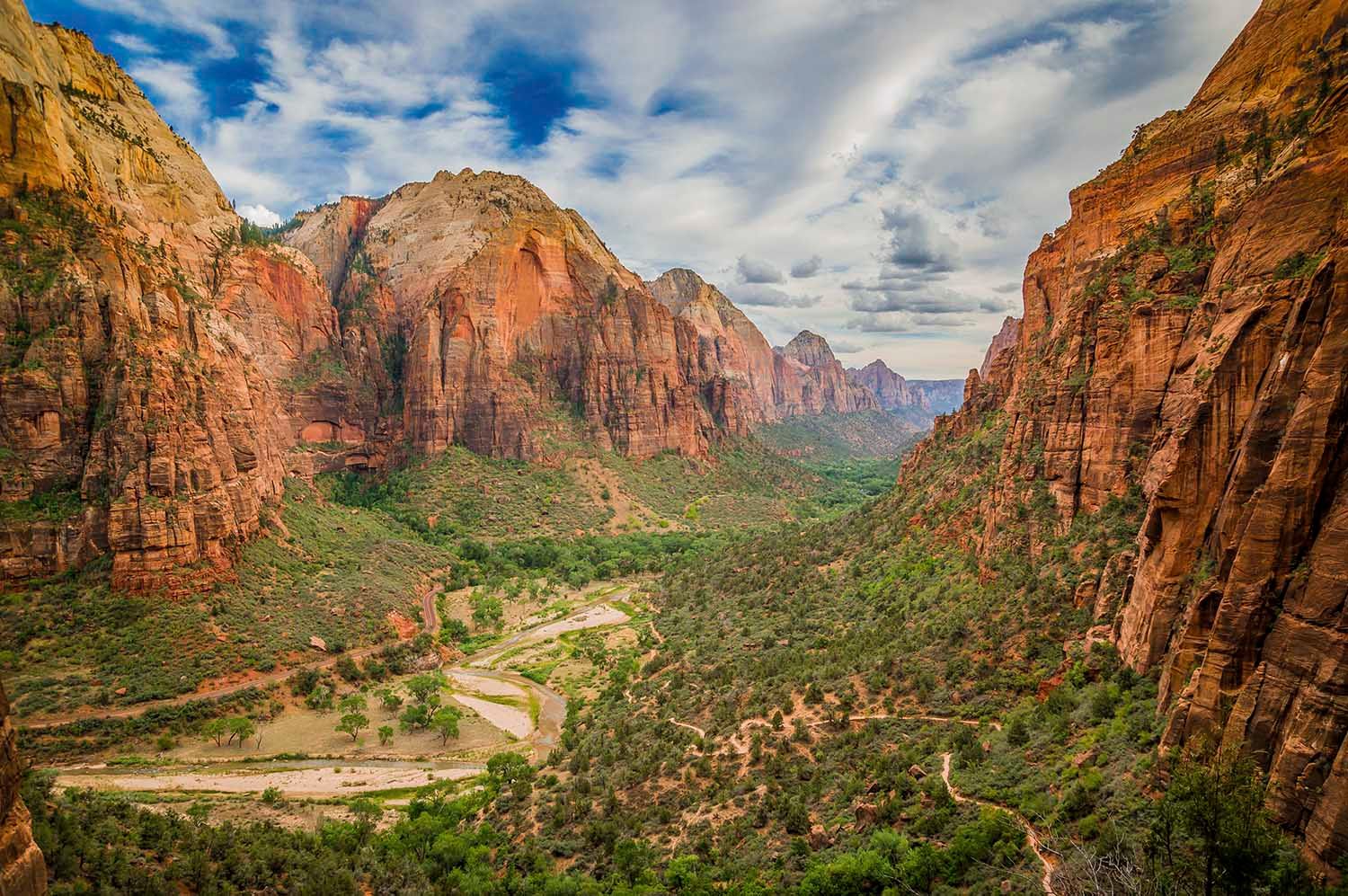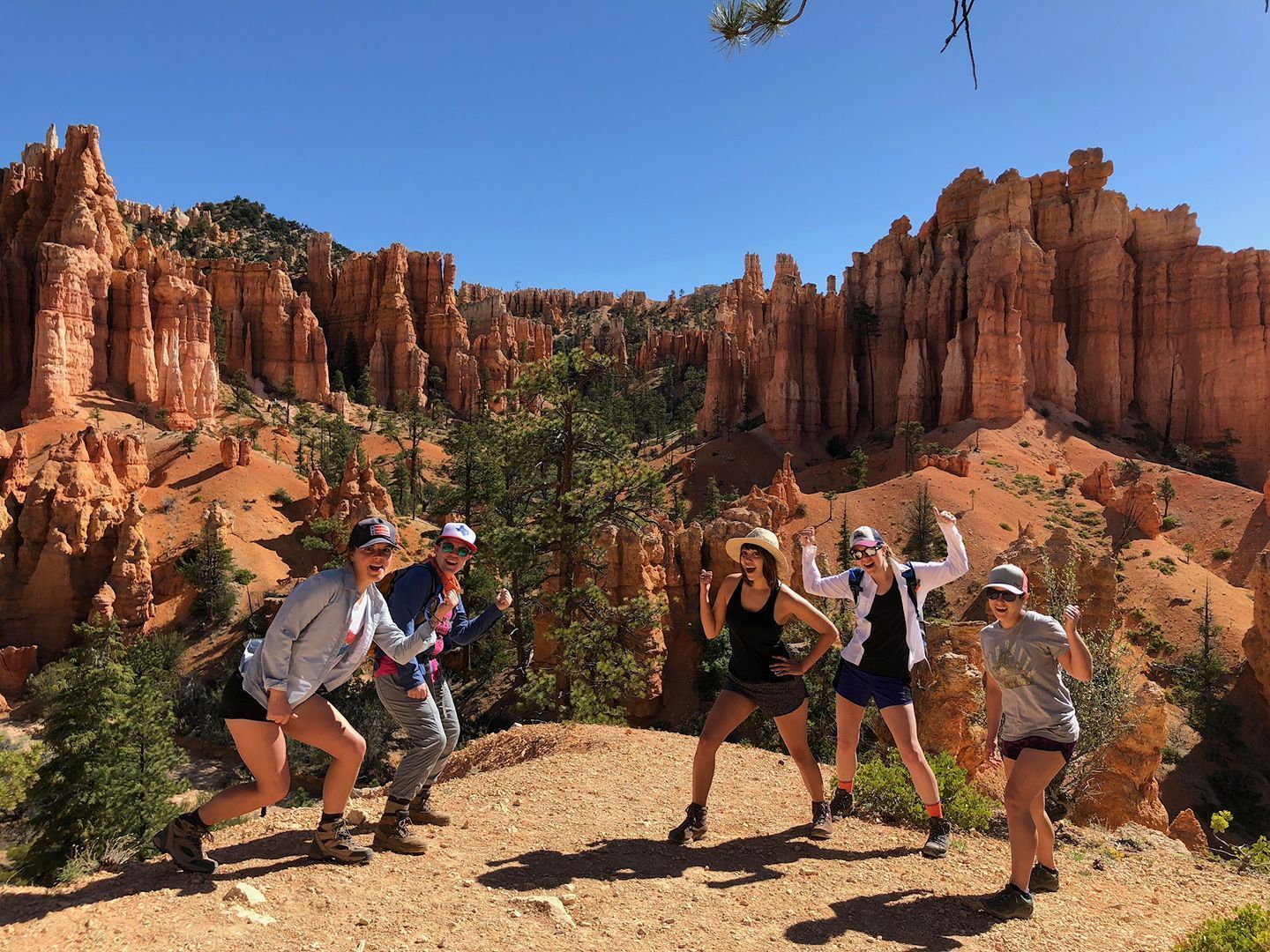Training for a Grand Canyon Hike
Many people search for how to train for
hiking Grand Canyon routes because the canyon is both beautiful and extremely demanding. Below the rim, hikers face steep descents, loose surfaces, and major temperature swings. Knowing how to prepare to hike the
Grand Canyon is the key to staying safe and making the experience enjoyable.
Key Takeaways
- Start early when figuring out how to train for a Grand Canyon hike. Build up gradually with longer distances, steeper climbs, and a heavier pack to prepare for the canyon’s demanding terrain.
- Focus on lower body strength. If you are wondering how to train to hike the Grand Canyon, stair workouts and trail hikes that target your quads and calves are essential.
- Improve cardiovascular endurance to support long uphill climbs. A solid hiking workout plan that includes running, cycling, or stair sessions will help.
- Train in realistic heat to prepare your body for the Grand Canyon’s conditions, especially if you are following a Grand Canyon rim to rim training plan or prepping for big elevation change.
- Add flexibility and balance work for better stability on uneven trails.
- Consider guided Grand Canyon hikes, where outfitters like Four Season Guides handle logistics so you can focus strictly on your training.
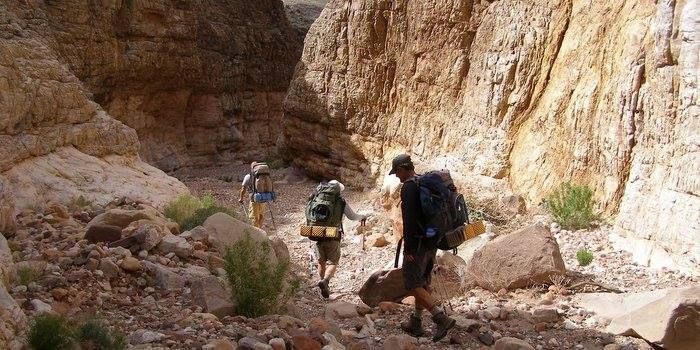
Training for a Grand Canyon Hike
- Start your training early. A strong foundation matters whether you are doing a day hike or tackling a more ambitious Grand Canyon rim to rim hike training plan. Increase your mileage slowly, add more elevation over time, and if backpacking, progressively add weight to your pack. If your trip is approaching quickly and you are not yet conditioned, consider postponing or choosing a lighter-load option such as a Basecamp Adventure.
- Strength training plays a major role. Many hikers find that downhill travel is the toughest part of the day. To handle the steep Grand Canyon elevation change, you will need strong quads and calves. Hiking local trails with a backpack is ideal, but stadium stairs or office stairwells work well for busy schedules. These activities also support longer-term goals such as a rim-to-rim training plan or a r2r2r training plan.
- Cardio conditioning is essential for the long climbs out of the canyon. A consistent hiking training plan can include running, swimming, cycling, spin classes, incline treadmill work, or stair-master sessions. These help strengthen your heart, legs, and lungs for extended uphill efforts.
- Since the Grand Canyon often brings heat and dry air, test yourself in different weather conditions instead of training only in air-conditioned environments. Hydration, nutrition, and salt intake are critical, especially if your hike includes extended exposure or strenuous elevation changes.
- Flexibility and balance round out your conditioning. Yoga, Pilates, and stretching improve mobility and reduce the risk of injury, supporting every step of your Grand Canyon hike training.
If the idea of training for a Grand Canyon hike seems overwhelming enough, and you’d rather not worry about the remaining details of the adventure, it’s often certainly beneficial to hike with an experienced outfitter. Companies like Four Season Guides will provide all of the gear, food, permitting, route planning, and transportation to and from Grand Canyon. They will also provide you or your group with a professional and medically-trained guide that will allow you to keep your mind off the details and eyes on the beauty surrounding you.
To learn more about Grand Canyon Hikes with Four Season Guides, check out the:
Canyons Classic Backpacking Tour or the
Grand Canyon Complete Adventure.
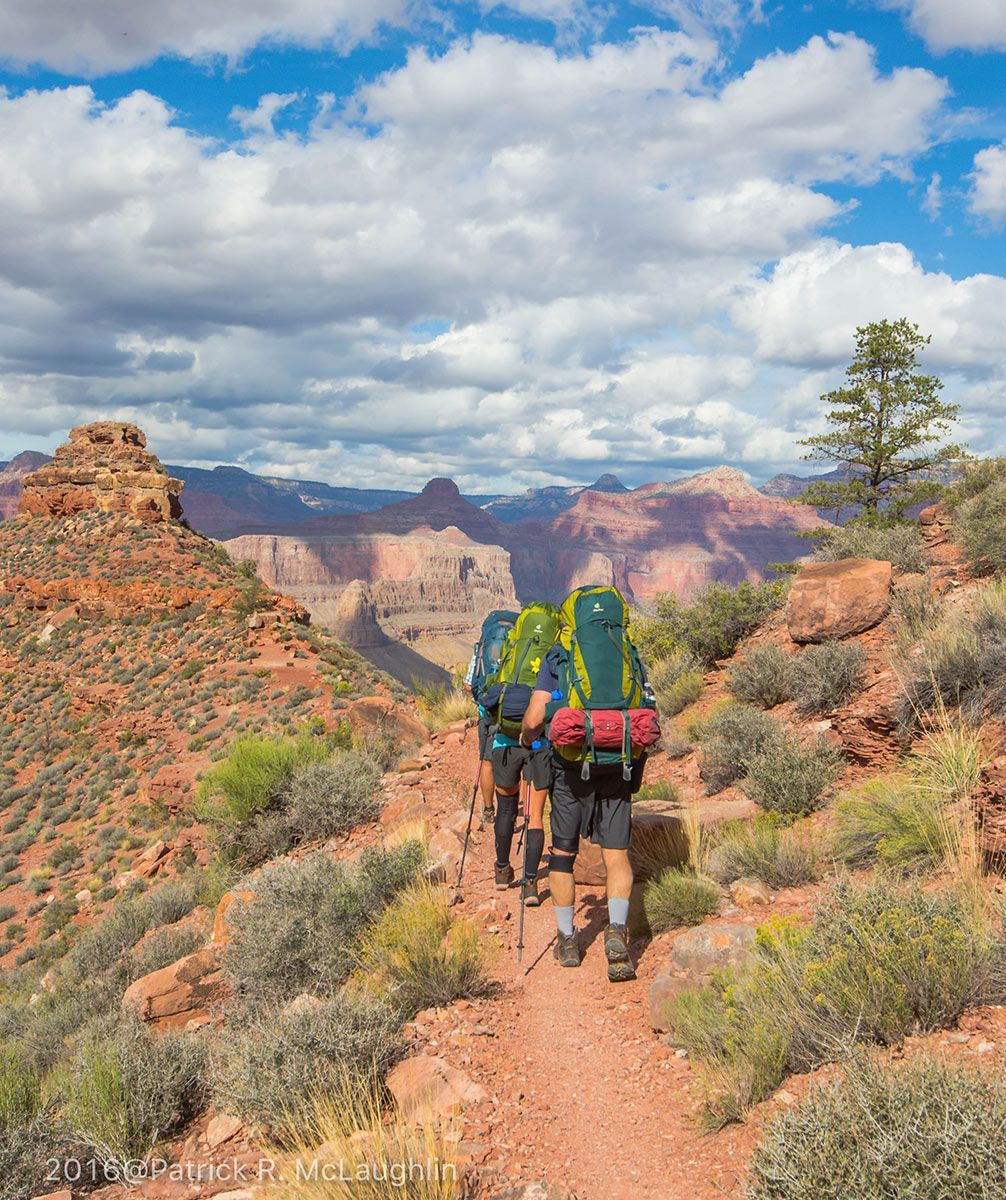
Frequently Asked Questions
Get ready for your Grand Canyon adventure with smart, progressive training and preparation to make your hike safe, enjoyable, and rewarding.
How far in advance should I start training for a Grand Canyon hike?
Ideally, begin training several months before your hike. Gradually increase distance, elevation gain, and backpack weight over time. Waiting until just a few weeks before your trip doesn’t allow your body to adapt, increasing the risk of fatigue or injury during your Grand Canyon trek.
What muscles should I focus on when training for the Grand Canyon?
Prioritize strengthening your quadriceps and calves—these muscles take the brunt of both the steep ascents and descents. Add squats, lunges, stair climbing, or hiking with a loaded pack to your routine. Building lower-body strength will help stabilize your knees and prevent soreness on the trail.
What type of cardio training is best for hiking the Grand Canyon?
Endurance-based cardio like hiking, cycling, running, or swimming will help prepare your heart and lungs for the demanding climbs and descents. If you use a gym, try the treadmill with incline, stair-master, or spin classes to mimic the canyon’s steep terrain.
How can I train if I don’t live near mountains or trails?
If trails aren’t available, practice on stairs, stadium bleachers, or use gym equipment like the stair machine or inclined treadmill. Wearing a backpack with added weight helps simulate real trail conditions and builds both strength and endurance for your canyon hike.
Should I train in hot weather for the Grand Canyon?
Yes—if you’ll be hiking during warmer months, train in warmer conditions when safe. This helps your body adapt to heat and manage hydration. However, avoid overexertion, drink plenty of water, and maintain salt intake to prevent dehydration and electrolyte loss.
Why is flexibility important for a Grand Canyon hike?
Flexibility helps prevent muscle strain and joint stiffness on long hikes. Regular stretching, yoga, or Pilates improves balance and mobility, making steep climbs and uneven terrain easier to handle. Incorporate stretching into your training to enhance endurance and recovery.
What’s the biggest challenge when hiking the Grand Canyon?
Surprisingly, most hikers find the descent harder than the climb. Steep downhill sections strain the legs and knees, especially when carrying weight. Training for both strength and control on descents will make your hike safer and more comfortable.
How can I prepare for changing weather in the Grand Canyon?
Train in different conditions to understand how your body reacts to heat, cold, and dry air. The canyon’s temperature can vary drastically, so practice layering clothing, staying hydrated, and pacing yourself to handle these environmental shifts effectively.
Do I need a guide for hiking the Grand Canyon?
While experienced hikers can go independently, joining a professional outfitter like Four Season Guides can simplify logistics. They handle gear, food, permits, and transport—letting you focus solely on training and enjoying the scenery. Guided trips also include safety support from trained professionals.
What’s a good way to stay motivated during training?
Set gradual goals and mix up your workouts with hikes, gym sessions, and outdoor activities. Train with a partner or group for accountability. Visualizing your Grand Canyon adventure can also keep motivation high as you prepare for the journey.
Four Season Guides, 506 N Grant St suite o, Flagstaff, AZ 86004, United States
+19285251552
35.19653980, -111.62000560

